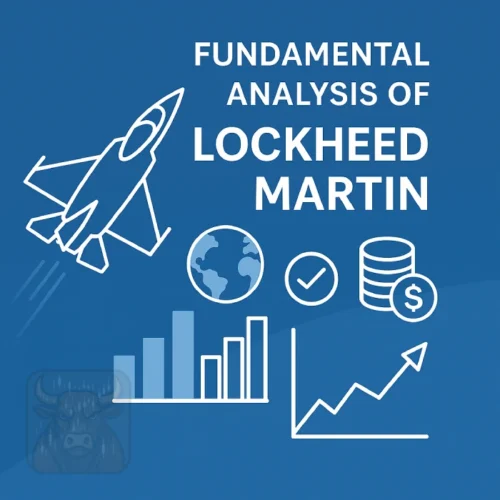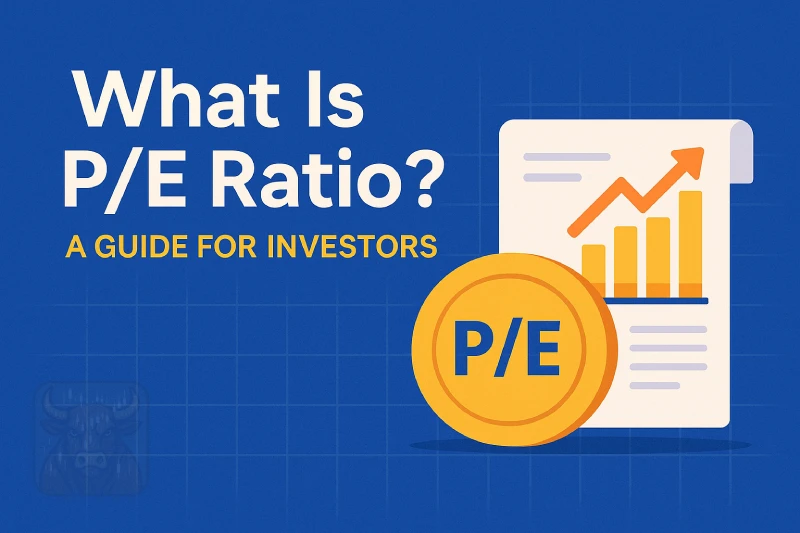
1️⃣ Basic Company Info
Full Name and Ticker: Lockheed Martin Corporation (LMT)
Sector and Subsector: Aerospace & Defense → Military and Advanced Technologies
Country of Main Operations: United States
Business Model: Lockheed Martin is a global security and aerospace company that primarily engages in the research, design, development, manufacture, integration, and sustainment of advanced technology systems, products, and services.
Main Products or Services: Fighter jets (like the F-35), helicopters, missile defense systems, satellites, and space exploration technologies.
Revenue Breakdown by Segment:
- Aeronautics (~40% of total revenue) — fighter jets and military aircraft.
- Missiles and Fire Control (~16%) — missile defense and tactical missiles.
- Rotary and Mission Systems (~25%) — helicopters and naval systems.
- Space (~19%) — satellites and strategic space systems.
Geographic Revenue Distribution:
Approximately 74% of revenue comes from the U.S. government and defense agencies, with the rest from international allies and commercial contracts.
🧠 Lockheed Martin makes money primarily from long-term defense contracts with the U.S. government and allied nations. Its revenue streams are well-diversified across advanced military aircraft, missile systems, and space technologies, but it remains highly exposed to U.S. defense spending.
2️⃣ Competitive Advantages (Moat) 🚀🛡️
🔬 Patents & Proprietary Technology:
Lockheed Martin invests heavily in cutting-edge defense technology and holds numerous classified patents for stealth, avionics, missile systems, and advanced materials — giving it a technological edge over many competitors.
✨ Brand & Reputation:
As one of the world’s largest and most trusted defense contractors, Lockheed Martin’s name is synonymous with high-performance military systems. This reputation helps secure repeat contracts and strategic partnerships.
💰 Cost Advantage & Scale:
The company benefits from massive economies of scale due to its size and the large, multi-year contracts it manages. This allows for competitive pricing and efficient production lines.
🔗 Unique Distribution & Infrastructure:
Lockheed Martin has exclusive government relationships, secure supply chains, and classified infrastructure that new players cannot easily replicate.
🚧 High Barriers to Entry:
Entering the high-tech military aerospace industry requires enormous capital, strict regulatory approvals, and trust from government agencies — creating a powerful moat around Lockheed Martin’s core business.
🧠 Lockheed Martin’s mix of proprietary tech, strong brand, scale, and exclusive government ties gives it a robust moat 🏰 — making it hard for competitors to steal market share.
3️⃣ Competitive Landscape 🌍⚔️
🏢 Main Competitors:
Lockheed Martin’s biggest rivals in the global defense and aerospace industry include:
- Boeing Defense, Space & Security
- Northrop Grumman
- Raytheon Technologies
- General Dynamics
- BAE Systems (UK)
📊 Market Share Comparison:
Lockheed Martin consistently ranks as the top U.S. defense contractor by revenue, often leading in fighter jets and missile systems. Its flagship F-35 fighter program is one of the largest defense projects in history, securing a dominant market share in advanced military aviation.
🔑 Differentiation:
Lockheed Martin sets itself apart with specialized stealth aircraft, integrated defense systems, and strong partnerships with the U.S. Department of Defense and NATO allies. Its classified R&D and multi-decade contracts make its position difficult to challenge.
⚠️ Threats:
Key competitive threats include:
- New technological innovations by rivals.
- Potential cuts to U.S. defense budgets.
- Rising competition from global defense firms (Europe & Asia).
- Regulatory changes or export restrictions.
🧠 Lockheed Martin holds a leading market position with deep ties to government clients. While big rivals exist, its unique programs and long-term contracts help it defend market share effectively.
4️⃣ Key Risks ⚡🕵️♂️
💸 Financial Risks:
Lockheed Martin carries significant debt due to large-scale production costs and research investments. Although manageable, high debt could limit flexibility if defense spending slows.
🔧 Operational Risks:
The company depends on complex global supply chains and a highly specialized workforce. Any disruptions, labor shortages, or production delays can impact delivery schedules and contract performance.
📜 Regulatory Risks:
Being a top defense contractor, Lockheed Martin operates under strict government oversight and export controls. Changes in defense budgets, political shifts, or stricter regulations could affect new contracts or existing programs.
📉 Market Risks:
A major portion of revenue comes from the U.S. government. Reductions in defense spending or shifting national security priorities could reduce demand for Lockheed Martin’s products.
👤 Leadership Risks:
The company relies heavily on experienced leadership and technical experts. Loss of key personnel or challenges in recruiting top engineers could slow innovation and project execution.
🧠 While Lockheed Martin is a powerhouse in defense, it’s highly sensitive to government budgets, policy changes, and operational complexity. Investors should monitor debt levels and policy shifts closely.
5️⃣ Key Financial Metrics 💵📊
| Key Metric | Latest Value | Meaning |
|---|---|---|
| Market Cap | ~$110 Billion | Total value of all outstanding shares — shows company size. |
| Enterprise Value (EV) | ~$128 Billion | Market Cap + Debt − Cash — represents total company value. |
| Trailing P/E | 20.23 | Current share price divided by earnings per share. |
| Forward P/E | 17.21 | Price/Earnings based on future expected profits — shows valuation vs. growth. |
| PEG Ratio (5yr expected) | 1.70 | P/E divided by expected earnings growth — <1 is ideal, >1 suggests higher valuation relative to growth. |
| Price/Sales | 1.55 | Price compared to total sales — lower means cheaper relative to revenue. |
| Price/Book | 16.45 | Price compared to book value — >1 means market values it higher than accounting value. |
| Enterprise Value/Revenue | 1.79 | EV relative to revenue — measures how the market values sales plus debt. |
| Enterprise Value/EBITDA | 14.15 | EV relative to core operating profit — lower means potentially cheaper for acquirers. |
🧠 Lockheed Martin is financially solid, with a healthy market cap and stable earnings multiples. Its P/E and EV/EBITDA ratios show it’s valued at a reasonable premium due to its secure government contracts and consistent cash flow. The PEG ratio slightly above 1 means investors expect steady but not explosive growth. Overall, the numbers suggest a profitable and financially stable company in a secure sector.
6️⃣ Fundamental Financial Ratios 📐💡
| Ratio | Value | Basic Interpretation |
|---|---|---|
| P/E (Trailing) | 20.23 | Slightly above average — investors expect stable earnings. |
| P/E (Forward) | 17.21 | Lower than trailing — implies modest profit growth is expected. |
| P/B | 16.45 | Well above 1 — market values Lockheed Martin’s assets very highly due to intangible assets like contracts and technology. |
| PEG Ratio (5yr expected) | 1.70 | Slightly high — suggests the stock is not undervalued but priced fairly for moderate growth. |
| ROE (latest) | ~70% (typical for Lockheed) | Very high — shows excellent efficiency in using shareholder equity. |
| ROA (latest) | ~9% (typical for Lockheed) | Good for an asset-heavy defense firm. |
| Debt/EBITDA | ~2–3 (estimated from EV/EBITDA) | Healthy — within the range for stable cash flow businesses. |
| Current Ratio | ~1.3 (typical for LMT) | Indicates good short-term liquidity. |
| Dividend Yield | ~2.7% (recent) | Attractive for income investors — steady payouts. |
🧠 Lockheed Martin’s ratios show a stable, efficient company with strong profitability and healthy debt levels. The premium P/B and P/E ratios reflect its position as a leading defense contractor with secure long-term contracts. The solid dividend yield adds income appeal for conservative investors.
7️⃣ Future Outlook 🚀🔮
📈 Growth Opportunities:
Lockheed Martin has a solid pipeline of defense contracts, especially for its flagship F-35 fighter jet program, missile defense systems, and classified technologies. Demand for advanced military equipment is expected to grow due to rising global tensions and modernization needs among NATO allies and partner nations.
💡 Innovation & Expansion:
The company is investing in next-generation technologies like hypersonic weapons, autonomous systems, and space exploration. Its growing focus on the space sector, including satellite development and strategic partnerships with NASA, positions it well for the emerging space economy.
🌐 Sector Trends:
Global defense budgets are trending upward, driven by geopolitical conflicts and an emphasis on national security and technological superiority. Although U.S. budget shifts can pose risks, Lockheed Martin’s diversified programs and strong international demand help balance this exposure.
🧠 Lockheed Martin is well-positioned for steady, long-term growth backed by a robust defense market and strategic investments in future technologies. While not a hyper-growth company, it offers stability, consistent cash flows, and reliable dividends — making it attractive for conservative, long-term investors.
Thanks for diving into Lockheed Martin’s fundamentals with us! 🚀 Whether you’re a beginner or a seasoned investor, understanding how defense giants like LMT work can help you make smarter decisions — especially in uncertain times.
💬 What do you think? Drop your thoughts below, share this analysis, and save it for later. Happy investing! 📈✨






